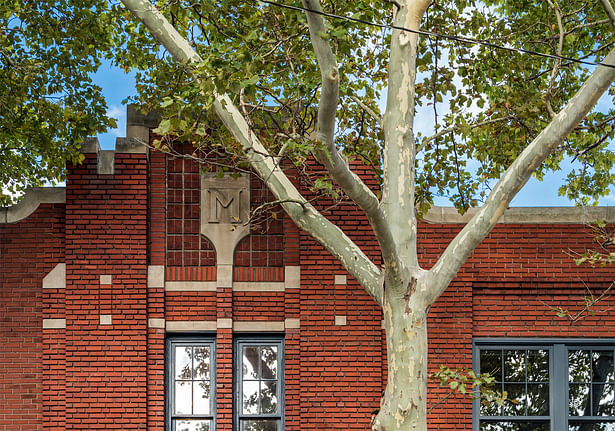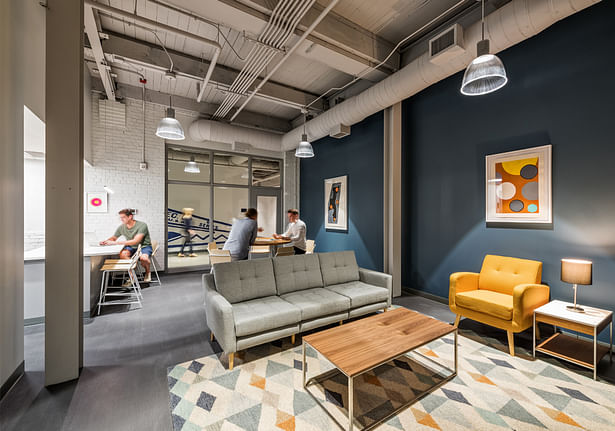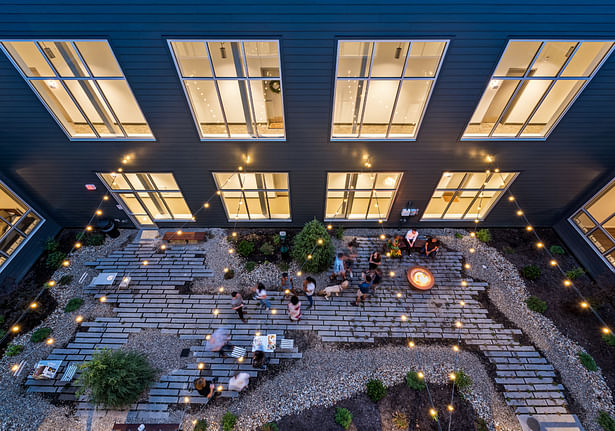
Cleveland | New York, NY

Hidden behind a row of sycamore trees on a quiet residential street in Cleveland’s Asia Town neighborhood sits the Mueller Loft apartment building – reborn from the Mueller Electric Company Factory constructed in 1922. The original two-story building was a small, post-and-beam structure with smooth red brick and simple masonry detailing. As the company expanded over 90 years, multiple additions resulted in a deep and dark floor plate (120’x400’) with large steel windows relegated almost entirely to the west facade.
In first visiting the site, the most striking feature was the west façade’s windows filtering light through the trees along East 31st Street. The greatest challenge was how to bring natural light and views into the recessed spaces of the factory. The solution was three-dozen new window openings, 12 skylights, and most dramatic of all – opening the core of the building to a “hidden” Japanese-inspired garden that would permit light and views, and serve as an oasis to the tenants with a nod to the district’s Asian heritage.
As a historic landmark in Cleveland, the exterior masonry and windows are completely restored to their original state. Modern charcoal trim and details give the building a 21st-century industrial aesthetic. New landscaping and sidewalks along the west edge provide a softer, pedestrian path for the entire neighborhood.
Opposite the trend of small, high-efficiency units in the surrounding market, Mueller’s interior design capitalizes on the tall factory ceilings and enormous windows to let light travel deep within the unit. The original roof structure is exposed throughout, weaving in new conduit, piping and ductwork to accentuate the industrial feel. The result is 51 spacious, light-filled lofts with a wide mix of layouts ranging from 570 square-foot studios to 1,400 square-foot three-bedroom apartments.
The building is now fully compliant with Enterprise Green Community Standards. Playful and eclectic LED lighting serves the building’s public spaces, stairwells and corridors reminding tenants and visitors of its electric past. Altogether, this historic restoration continues to ensure its future.
Awards: Distinguished Adaptive Reuse Award, Cleveland Restoration Society, Honorable Mention, AIA Cleveland
Status: Built
Location: Cleveland, OH, US
Firm Role: Architect, Interior Designer, MEP Engineer
Additional Credits: Sustainable Community Associates (Client), Craig Cohen (Structural), Naylor Wellman (Historic Preservation Consultant), Riverstone (Civil), Acentech (Acoustics), John G. Johnson (CM)



